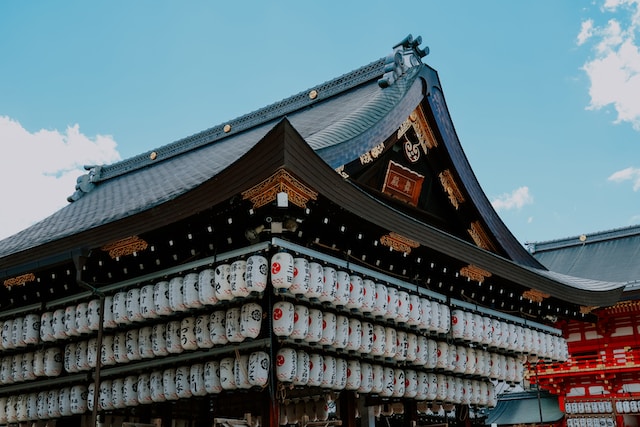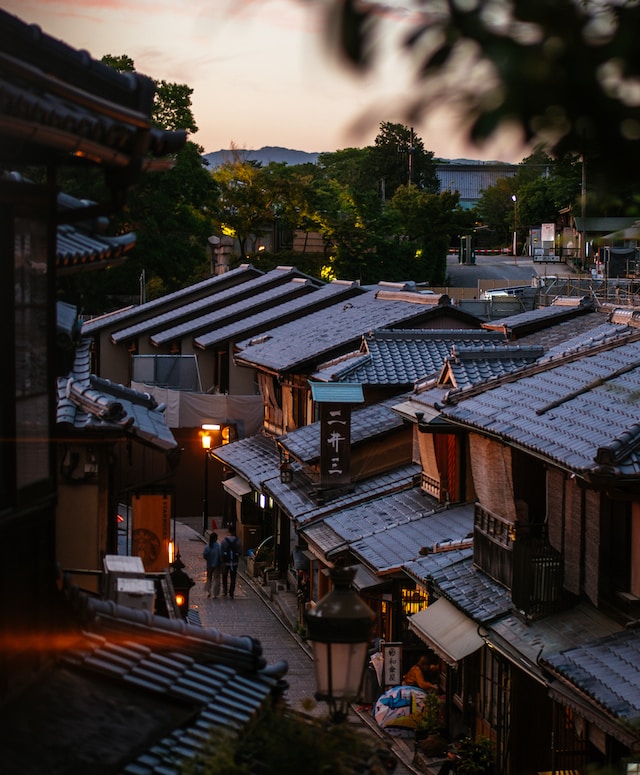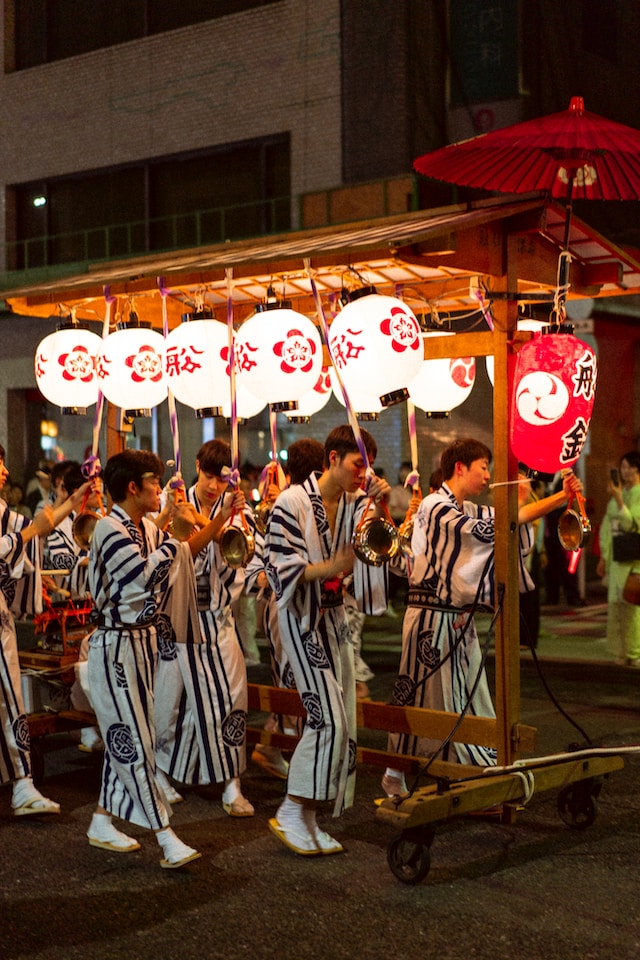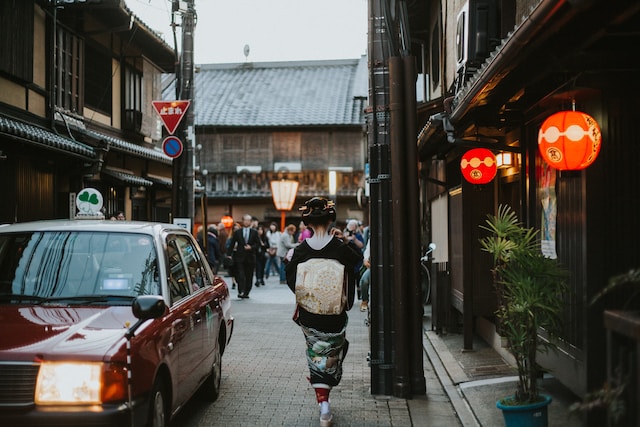
Deep in the heart of Kyoto, Japan, lies a vibrant and enchanting celebration known as Gion Matsuri. This annual festival, steeped in centuries of tradition and history, draws visitors from all corners of the globe to witness its splendor. With its origins dating back to the 9th century, Gion Matsuri is a testament to the enduring beauty and cultural significance of Japan’s rich heritage. As the scents of incense and the rhythm of ancient chants fill the air, one cannot help but be transported to a world where time seems to stand still, where the past meanders seamlessly into the present, and where the spirit of Gion Matsuri reigns supreme.
Historical Context and Origins
Gion Matsuri, revered as one of Japan’s most cherished festivals, has its roots deeply intertwined with the historical and cultural fabric of Kyoto. Dating back to the 9th century, this spectacular event emerged as a religious ritual to appease the gods and ward off calamities that plagued the city. Today, it stands as a vibrant testament to Japan’s enduring spirit and tradition.
The origins of Gion Matsuri can be traced back to the year 869 when a series of devastating plagues struck Kyoto. The city, in the grip of desperation, turned to its most revered deity, Yasaka Shrine, for salvation and divine intervention. Prayers were offered to eradicate the illnesses and ensure prosperity for the future.
Birth of the Festival
The festival takes its name from “Gion,” which refers to the area around Yasaka Shrine. Some historical accounts suggest that the festival was inspired by the Goryeo Period of Korea, where similar rites were held to ward off evil spirits and pray for good fortune. Over time, Gion Matsuri garnered its unique identity, blending local customs with external influences.
As Kyoto prospered and flourished during the Edo Period, the festival evolved into a platform for merchants to showcase their wares and for communities to gather in joyous celebration. Neighborhoods and districts crafted extravagant floats, known as “yama” and “hoko,” adorned with exquisite craftsmanship and elaborate decorations.
The Modern Day Splendor
Through countless challenges and historical transformations, Gion Matsuri has stood the test of time, adapting to changing circumstances while preserving its essential cultural essence. Today, it continues to captivate visitors with its breathtaking processions, lively street performances, and a myriad of traditional events that honor Kyoto’s cherished heritage.
The Gion Matsuri Parade
The Gion Matsuri Parade stands at the heart of this grand festival, a dazzling display of artistry, craftsmanship, and cultural significance. This procession, eagerly anticipated by locals and visitors alike, weaves its way through the streets of Kyoto, bringing the city to life with its vibrant colors, rhythmic music, and traditional performances.

The Yamaboko Floats
At the heart of the Gion Matsuri Parade are the magnificent yamaboko floats, towering structures that serve as both a visual feast and a symbol of the festival’s historical roots. These floats, intricately designed and adorned, showcase the craftsmanship of Kyoto’s skilled artisans. Divided into two types, yama and hoko, each float represents a specific district or neighborhood within the city.
The yama floats, with their immobile platforms, evoke a sense of ancient tradition. Elaborately decorated with vibrant tapestries, ornate carvings, and delicate lanterns, they pay homage to Kyoto’s rich cultural heritage. Each yama float tells a unique story, depicting scenes from mythology, folklore, and historical events.
On the other hand, the hoko floats, towering and majestic, boast incredible mobility. Pulled by large groups of men, these floats glide gracefully through the streets, evoking a sense of awe and admiration. Adorned with golden embellishments, lacquered woodwork, and beautifully painted figures, the hoko floats are a testament to the skill and dedication of the craftsmen who bring them to life.
The Gion Bayashi
As the yamaboko floats wind their way through Kyoto, a melodic symphony fills the air. The Gion Bayashi, a traditional musical ensemble, accompanies the parade, infusing it with a mesmerizing rhythm that resonates with the spirits of the festival. Drums, flutes, and other traditional instruments join forces to create a harmonious blend of sound, captivating the audience and elevating the spectacle.
Maiko and Geiko
Amongst the sea of colors and music, one can catch glimpses of ethereal beauty in the form of Maiko and Geiko, traditional Kyoto entertainers. With their meticulously designed kimonos, elaborate hairstyles, and striking makeup, these skilled artists embody elegance and grace as they perform traditional dance routines along the parade route. Their graceful movements, accompanied by the melodic sounds of string instruments, add an air of enchantment to the festivities.
A Journey Through Kyoto’s Streets
Like a winding river, the Gion Matsuri Parade meanders through Kyoto’s historic streets, inviting spectators to immerse themselves in the city’s storied past. Starting at the iconic Yasaka Shrine, the procession makes its way through the bustling Hanamikoji Street, enveloping the onlookers in a whirlwind of sights and sounds. Along the route, curious visitors can explore the traditional tea houses, trendy boutiques, and charming cafes that line the streets, adding to the festival’s allure.
Yamaboko Construction and Design
At the heart of Gion Matsuri’s grand procession are the magnificent yamaboko floats, towering structures that embody the festival’s rich history and cultural significance. The construction and design of these floats require meticulous craftsmanship, dedication, and a deep understanding of Kyoto’s traditional artistic techniques. Let us delve into the fascinating world of yamaboko construction and design, where skillful artisans bring these magnificent floats to life.
Constructing the Foundation
Before the transformation into dazzling works of art, the yamaboko floats begin with the creation of their sturdy foundations. Expert carpenters meticulously build the base using robust wooden beams and pillars, ensuring stability and endurance throughout the festival.
In true Kyoto style, the yamaboko floats are assembled using traditional joinery techniques that have been perfected over centuries. Without the use of nails or modern construction methods, these skilled craftsmen apply intricate woodworking techniques, such as mortise and tenon joints, to secure every piece together. Each joint is meticulously fitted to ensure the float’s structural integrity.

- Elaborate Tapestries
One of the defining features of the yamaboko floats is the intricate tapestries that adorn their towering edifices. Skilled weavers dedicate countless hours to create stunning fabric artworks, depicting mythical scenes, historical events, and traditional motifs. These tapestries, meticulously hand-woven using a variety of vibrant and richly colored threads, add a touch of opulence and elegance to the floats.
- Exquisite Carvings
The skilled hands of Kyoto’s master carvers bring the yamaboko floats to life with their intricate and detailed carvings. Each float is adorned with beautifully sculpted, wooden figurines, often representing deities, legendary creatures, or historical figures. The delicate carvings showcase the artisans’ precision and artistry, adding a sense of reverence and cultural significance to the floats.
- Delicate Lanterns
As dusk settles over the festival, the yamaboko floats come alive with the warm glow of delicate lanterns. These meticulously crafted lanterns, made from Washi paper and bamboo frames, illuminate the floats and cast an enchanting ambiance. The float’s exquisite design is further accentuated by the soft flickering light, creating an ethereal beauty that captivates all who behold it.
Community Participation
Gion Matsuri is not just a grand spectacle for the eyes, it is a celebration that brings together the entire community of Kyoto. From the dedicated craftsmen who painstakingly construct the yamaboko floats to the enthusiastic volunteers who lend a helping hand, the festival is a true testament to the power of collective effort and shared traditions.
Neighborhood Pride: Each district and neighborhood within Kyoto takes great pride in their participation in Gion Matsuri. Throughout the year, residents come together to plan and organize the construction of their floats, ensuring that every detail is meticulously executed. The sense of camaraderie and shared purpose within these communities is palpable, as neighbors bond over the craftsmanship, decorations, and historical significance of their respective floats.
Generous Contributions: Gion Matsuri, as a non-profit event, relies heavily on the generosity and support of local businesses and residents. From financial contributions to in-kind donations, the festival thrives due to the goodwill and dedication of those who recognize the importance of preserving Kyoto’s heritage. It is a harmonious collaboration between the local community and festival organizers, ensuring that Gion Matsuri continues to enchant generations to come.
Volunteer Spirit: The vibrancy and success of Gion Matsuri would not be possible without the countless volunteers who dedicate their time and energy to ensure the smooth running of the festivities. From assisting with crowd control and traffic management to helping with float assembly and disassembly, these unsung heroes work tirelessly behind the scenes, infused with a genuine passion for their city and its traditions. It is through their selfless dedication that the magic of Gion Matsuri is able to unfold seamlessly year after year.

Passing Down Traditions: Gion Matsuri holds a special place in the hearts of Kyoto’s younger generation, who eagerly take part in the festivities, not just as spectators, but as active participants. The festival serves as a beautiful link between generations, with parents passing down the knowledge and skills required to construct and decorate the floats to their children. This intergenerational exchange fosters a deep appreciation for cultural heritage and instills a sense of pride in preserving traditions for the future.
Spectator Engagement: Gion Matsuri is a feast for the senses, and the onlookers play an integral role in the festival’s magic. The streets of Kyoto come alive with excitement as spectators eagerly gather to witness the procession of floats, soak in the enchanting music, and revel in the energy of the performances. The cheers, applause, and smiles of the crowd create an atmosphere of shared joy and camaraderie, transforming the festival into a collective experience that transcends boundaries.
Gion Matsuri weaves together the contributions and spirit of an entire community. It is an ode to the strong bonds between people, a celebration of cultural heritage, and a timeless reminder that together, we can create something truly magical.

